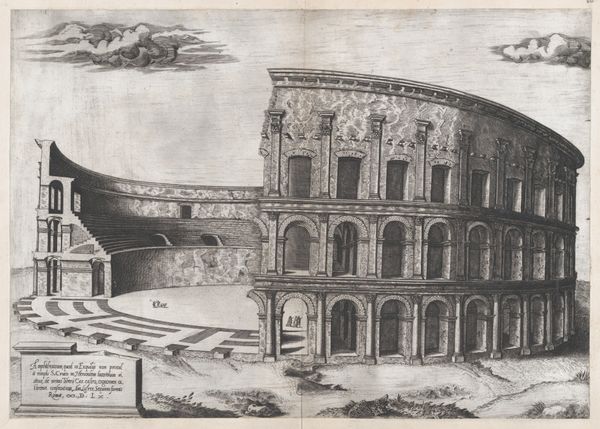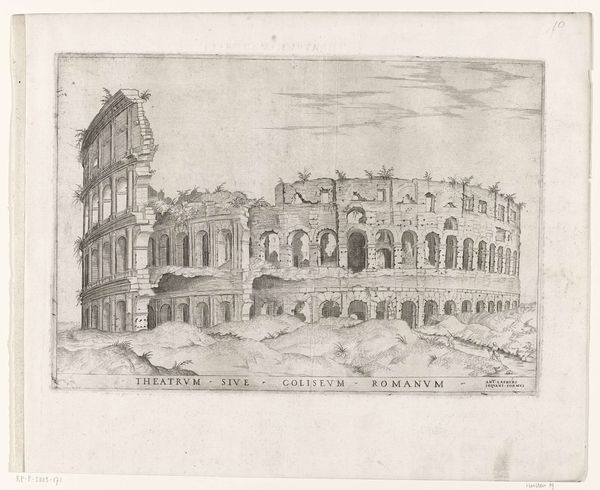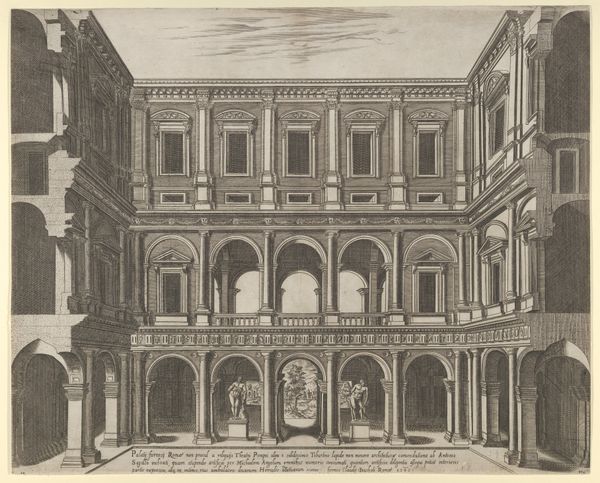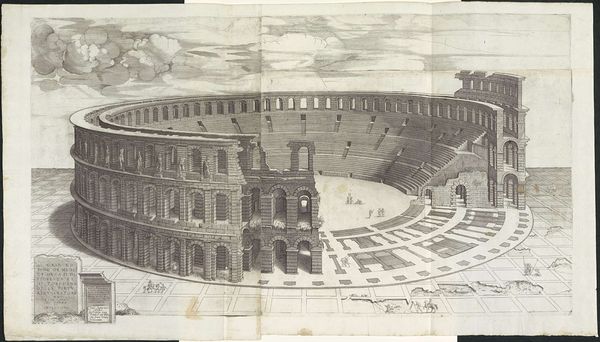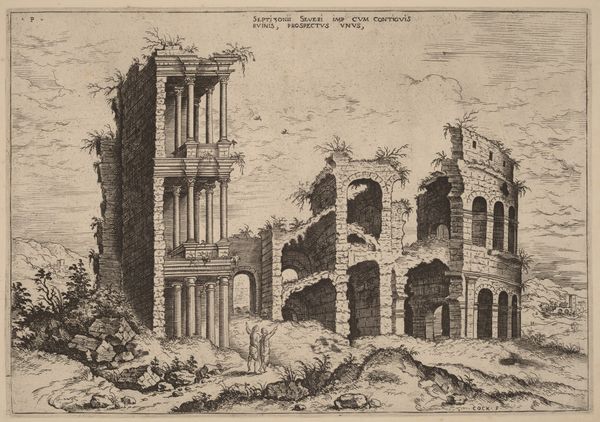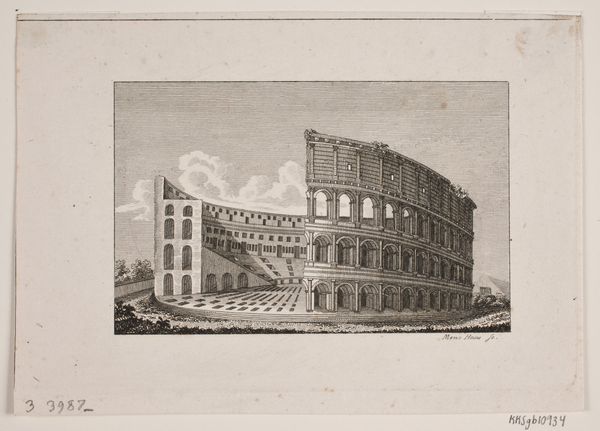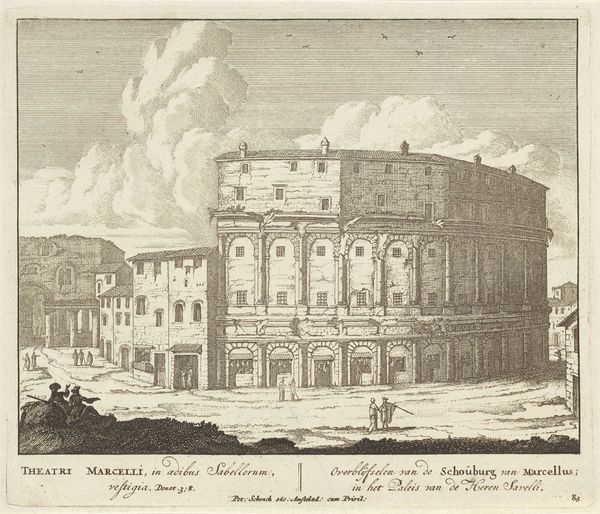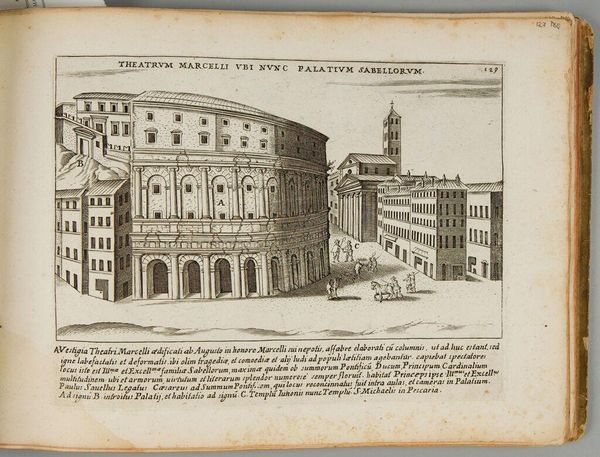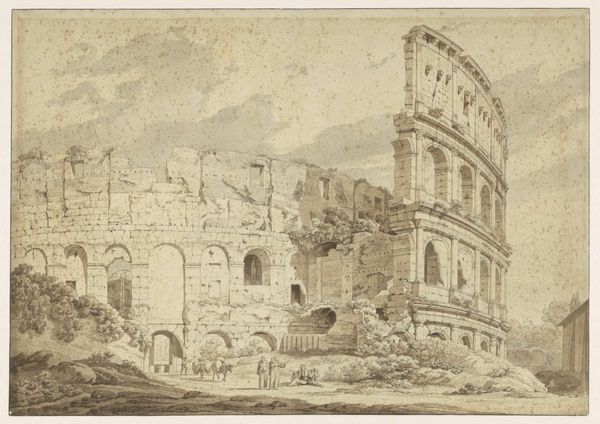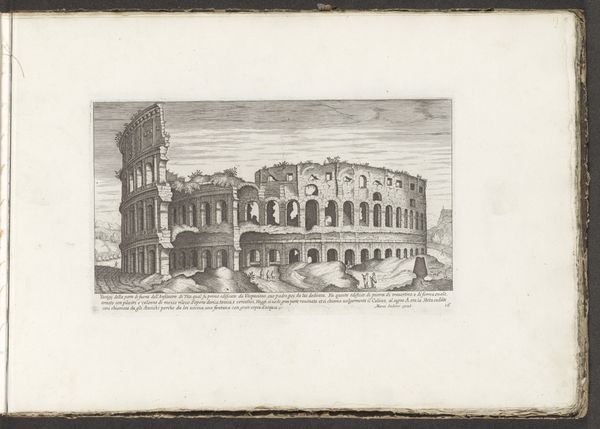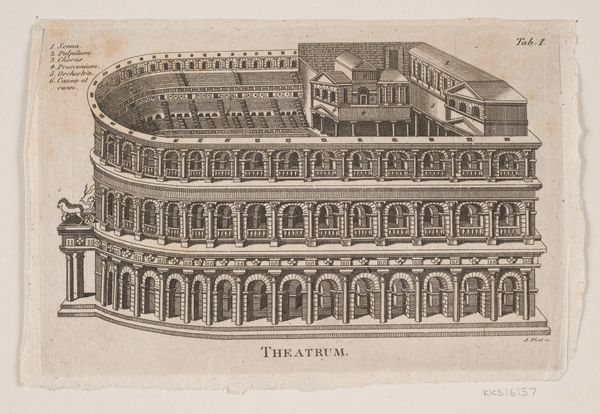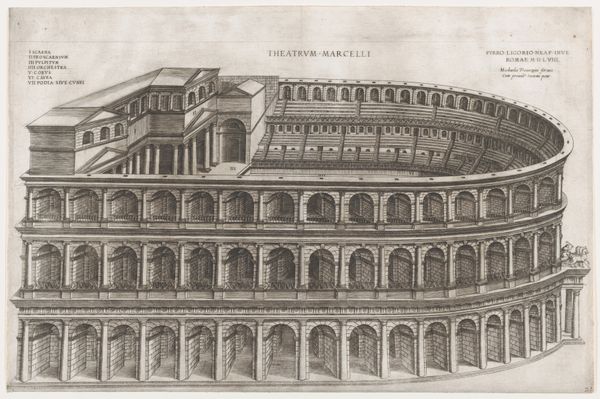
print, engraving, architecture
# print
#
perspective
#
geometric
#
ancient-mediterranean
#
cityscape
#
history-painting
#
italian-renaissance
#
engraving
#
architecture
Dimensions: height 330 mm, width 463 mm
Copyright: Rijks Museum: Open Domain
This print of the Amphitheatrum Castrense was made by an anonymous artist using etching. The etched lines create a compelling tension between the real and the represented. The material qualities of the print itself – its paper, ink, and linear composition – direct our attention to the architecture. This architectural representation of the amphitheater highlights the relationship between design, labor, and social function. Consider the original construction: the quarrying of stone, the precise carving of each block, and the assembly of this massive structure. All were testaments to human endeavor. The print captures the essence of that effort, while also reminding us of the social context in which it was made. The amphitheater was a place of spectacle, entertainment, and public gathering. Looking at it today, we can appreciate how the print preserves not just a building, but a set of values, labor practices, and aesthetic ideals. It bridges the worlds of craft, design, and social history.
Comments
No comments
Be the first to comment and join the conversation on the ultimate creative platform.
